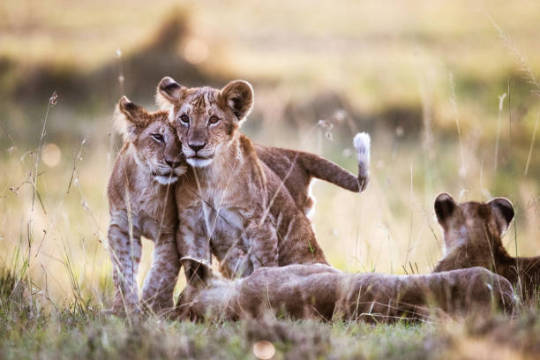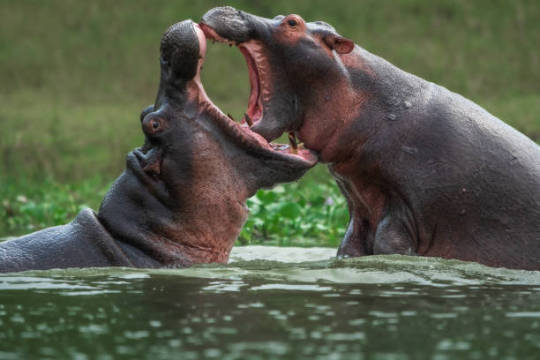#and various species of vultures and raptors. The park’s varied habitats
Explore tagged Tumblr posts
Text
What are the best birding sanctuaries in Tanzania?

Travel Company: DAV Safaris
Website: www.davsafaris.com
Email:[email protected]
Tel: +256757795781 or +256701412430
Tanzania, a breathtaking gem in East Africa, is not only celebrated for its stunning landscapes and vibrant wildlife but also for its remarkable avian diversity. With over 1,100 recorded bird species, this country is a true paradise for birdwatchers. Whether you are a seasoned ornithologist or a casual nature lover, Tanzania offers an array of birding sanctuaries that promise unforgettable experiences. This guide will delve into the best birding sanctuaries in Tanzania, highlighting key locations, notable species, and essential tips for your Tanzania birding tours.
1. Serengeti National Park
Serengeti National Park is arguably the most famous wildlife reserve in the world. While known for the Great Migration, its diverse birdlife is equally captivating. The park hosts over 500 bird species, making it a premier destination for birding enthusiasts.
In the Serengeti, birdwatchers can expect to see the elegant Secretary Bird, the majestic African Fish Eagle, and various species of vultures and raptors. The park’s varied habitats, ranging from open savannas to lush riverine forests, provide a rich tapestry for bird watching.
Birding is excellent year-round, but the wet season (November to April) is particularly rewarding. During this time, migratory species flock to the area, enhancing your bird watching experience.
2. Ngorongoro Crater
A UNESCO World Heritage site, the Ngorongoro Crater is a unique ecosystem that supports a diverse range of wildlife and bird species. Its stunning landscapes create an unforgettable backdrop for bird watching.
The crater is home to the rare Black Rhinoceros and over 200 bird species, including the impressive Lammergeier and the striking Kori Bustard. The mix of habitats—from expansive grasslands to dense woodlands—greatly enhances the birding experience.
The dry season (June to October) offers optimal visibility for wildlife, including birds. This period is ideal for spotting both resident and migratory species.
3. Lake Manyara National Park
Lake Manyara is renowned for its diverse ecosystems, including wetlands, forests, and grasslands. This park is a birdwatcher’s dream, with over 400 bird species recorded.
Birdwatchers can spot the iconic Flamingos, the colorful African Jacana, and the striking Grey-headed Kingfisher. The park is also known for its large populations of pelicans and storks, making it a birding hotspot.
The wet season attracts migratory birds, while the dry season provides excellent opportunities to see resident species. Thus, it’s a prime destination throughout the year.
4. Tarangire National Park
Tarangire is known for its iconic baobab trees and large herds of elephants. This hidden gem offers incredible bird watching opportunities, thanks to its diverse habitats.
Key Species
Look for the Tawny Eagle, the African Pygmy Goose, and the vibrant Yellow-collared Lovebird. Tarangire is also home to many migratory species during the wet season, enhancing the bird watching experience.
The best months for bird watching are during the wet season (November to April) when migratory birds arrive, providing a spectacular display for birdwatchers.
5. Ruaha National Park
As Tanzania's largest national park, Ruaha offers a unique mix of savanna and bushland, providing an excellent birding experience. Its remote location means fewer tourists, allowing for a more intimate bird watching adventure.
Ruaha is home to over 570 bird species, including the striking African Harrier-Hawk and the colorful Lilac-breasted Roller. The diversity of habitats supports a wide range of birdlife, making each visit unique.
The dry season (June to October) is ideal for spotting wildlife, including birds, as they become more active and visible.
6. Lake Victoria
As the largest lake in Africa, Lake Victoria supports a rich variety of bird species. The lake's wetlands and shores create perfect conditions for bird watching.
Look for the African Fish Eagle, Papyrus Gonolek, and various heron species. The lake is crucial for migratory birds, making it a hotspot during specific times of the year.
The wet season (November to April) attracts many migratory species, enhancing bird watching opportunities and making it a prime location during this period.
7. Amani Nature Reserve
Located in the Usambara Mountains, Amani Nature Reserve is a lesser-known sanctuary that offers a unique birding experience. The lush rainforest and diverse habitats provide a haven for many bird species.
Birdwatchers can look for the endemic Usambara Thrush and the vibrant Amani Sunbird, along with numerous other forest birds. This reserve plays a critical role in bird conservation in Tanzania.
Birding is excellent year-round, but the dry season offers the best opportunities for spotting endemic species, making it a must-visit for dedicated birdwatchers.
8. Usambara Mountains
The Usambara Mountains are characterized by a range of ecosystems, from montane forests to grasslands. This area is rich in biodiversity, making it a fantastic location for birding.
The mountains host several endemic species, including the Uluguru Bushshrike and the Tanzania Mountain Greenbul. The lush vegetation supports a variety of other birds, providing numerous bird watching opportunities.
The dry season (June to October) is best for bird watching, as birds are more active and visible, allowing for better sightings.
c provide an incredible opportunity to explore the country’s rich avian biodiversity. From the iconic Serengeti to the serene Amani Nature Reserve, each location offers unique bird watching experiences. Whether you're embarking on Tanzania birding tours or exploring these stunning sanctuaries independently, you’re sure to create unforgettable memories. Prepare your binoculars, pack your camera, and get ready to witness the incredible birdlife that Tanzania has to offer!
Book with DAV Safaris on www.dasafaris.com or our expert team directly
#What are the best birding sanctuaries in Tanzania?#Travel Company: DAV Safaris#Website: www.davsafaris.com#Email:[email protected]#Tel: +256757795781 or +256701412430#Tanzania#a breathtaking gem in East Africa#is not only celebrated for its stunning landscapes and vibrant wildlife but also for its remarkable avian diversity. With over 1#100 recorded bird species#this country is a true paradise for birdwatchers. Whether you are a seasoned ornithologist or a casual nature lover#Tanzania offers an array of birding sanctuaries that promise unforgettable experiences. This guide will delve into the best birding sanctua#highlighting key locations#notable species#and essential tips for your Tanzania birding tours.#1. Serengeti National Park#Serengeti National Park is arguably the most famous wildlife reserve in the world. While known for the Great Migration#its diverse birdlife is equally captivating. The park hosts over 500 bird species#making it a premier destination for birding enthusiasts.#In the Serengeti#birdwatchers can expect to see the elegant Secretary Bird#the majestic African Fish Eagle#and various species of vultures and raptors. The park’s varied habitats#ranging from open savannas to lush riverine forests#provide a rich tapestry for bird watching.#Birding is excellent year-round#but the wet season (November to April) is particularly rewarding. During this time#migratory species flock to the area#enhancing your bird watching experience.#2. Ngorongoro Crater#A UNESCO World Heritage site
0 notes
Text
Discover the Enchantment of Lake Manyara National Park
Nestled at the base of the Great Rift Valley escarpment, Lake Manyara National Park is a hidden gem in northern Tanzania. This compact yet diverse park offers a unique blend of lush forests, sparkling lakes, and open savannahs, making it an ideal destination for wildlife enthusiasts, birdwatchers, and nature lovers. Covering approximately 330 square kilometers (127 square miles), with the lake itself accounting for two-thirds of the park, Lake Manyara National Park promises an unforgettable safari experience.

A Birdwatcher's Paradise
Lake Manyara is renowned for its impressive birdlife, with over 400 species recorded within the park. The alkaline lake attracts vast flocks of flamingos, creating a stunning pink hue against the blue waters. Birdwatchers will find endless opportunities to spot both resident and migratory species in this vibrant ecosystem.
Birdwatching Highlights:
Flamingos: Thousands of lesser and greater flamingos congregate on the lake, offering a spectacular sight.
Waterbirds: Look out for pelicans, storks, herons, and cormorants that thrive in and around the lake.
Raptors: The park is home to various birds of prey, including the African fish eagle, palm-nut vulture, and the augur buzzard.
Unique Wildlife Encounters
While Lake Manyara National Park is famous for its birdlife, it also boasts a rich array of mammal species. The park's diverse habitats support a wide range of wildlife, making every game drive an exciting adventure.
Wildlife Highlights:

Stunning Landscapes
The scenic beauty of Lake Manyara National Park is truly captivating. The park's varied landscapes provide a picturesque backdrop for wildlife viewing and photography.
Scenic Highlights:
Great Rift Valley Escarpment: The dramatic cliffs of the Rift Valley create a stunning backdrop for the park. The escarpment rises sharply above the park, providing panoramic views of the lake and surrounding areas.
Groundwater Forests: The park's groundwater forests are lush and green, offering a stark contrast to the dry savannahs. These forests are home to a variety of wildlife and provide a cool, shady environment.
Lake Manyara: The shallow, alkaline lake itself is a focal point of the park, drawing countless birds and animals to its shores. The reflective waters create beautiful photo opportunities, especially at sunrise and sunset.
Hot Springs: The southern end of the park features hot springs, known as Maji Moto, which bubble up from the ground and flow into the lake. These geothermal features add a unique element to the park's diverse landscapes.
Safari Activities
Lake Manyara National Park offers a range of activities that cater to different interests and enhance the safari experience. Whether you’re looking for adventure or relaxation, there’s something for everyone.
Safari Highlights:
Game Drives: Explore the park on guided game drives, which are available throughout the day. Experienced guides will help you spot and learn about the park's diverse wildlife.
Night Drives: Night game drives provide a unique opportunity to see nocturnal animals in action, including leopards, bushbabies, and porcupines.
Canoeing: During the wet season, canoeing on Lake Manyara offers a peaceful way to observe birds and wildlife from the water.
Walking Safaris: Join a guided walking safari to explore the park on foot, allowing you to get closer to nature and discover the smaller details often missed on game drives.
Cultural Visits: Engage with the local communities around the park, including the Maasai and Mbugwe tribes, to learn about their traditional ways of life and cultural heritage.

Accommodation Options
Lake Manyara National Park offers a range of accommodation options to suit different budgets and preferences. From luxury lodges to budget-friendly campsites, there’s something for everyone.
Where to Stay:

Conclusion
Lake Manyara National Park is a hidden gem that offers a unique and rewarding safari experience. With its abundant birdlife, diverse wildlife, and stunning landscapes, it is a destination that should not be missed. Whether you’re a first-time visitor to Tanzania or a seasoned safari-goer, Lake Manyara promises an unforgettable adventure filled with remarkable sights and experiences. So pack your bags, bring your binoculars, and get ready to explore one of Tanzania’s most enchanting national parks.
#tourist#ugandian knuckles#tourism#wild animals#tour#Adventure#photography#beach#safari#africa#Nairobi#Uganda#Kenya#Masai Mara#beaches#Wanderlust#east africa#Travel Photography#travel blog#tanzania#tanned#zanzibar#tangled#tanzanite#kenyan#kenya moore#beachlife#Kenya Safari#Nairob#travel
0 notes